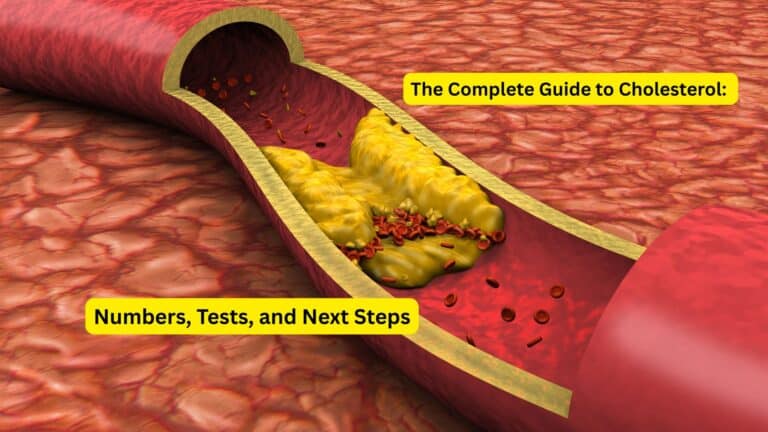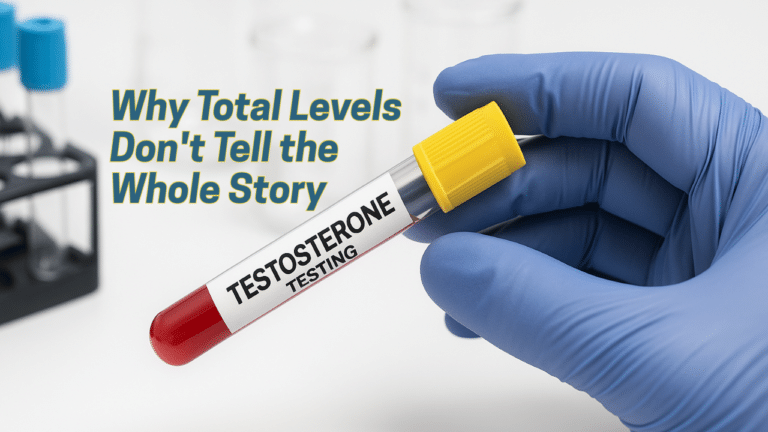The relationship between physical activity and thyroid function is more complex than many people realize. While exercise is universally recognized as beneficial for overall health, its specific effects on thyroid hormones—TSH, T3, and T4—vary significantly depending on the type, intensity, and duration of activity. For individuals managing thyroid conditions, understanding these nuances can make the difference between a workout routine that supports hormone optimization and one that inadvertently disrupts thyroid balance.
This comprehensive guide explores evidence-based strategies for tailoring exercise programs to support thyroid health. Whether you’re dealing with hypothyroidism, hyperthyroidism, or simply want to optimize your hormone function through physical activity, the following recommendations will help you find the right balance between beneficial movement and hormonal stability.
How Exercise Influences Thyroid Hormones
Exercise creates both immediate and long-term changes in thyroid hormone production and regulation. The thyroid gland responds dynamically to physical stress, adjusting hormone output based on the body’s metabolic demands. Understanding these responses is crucial for developing an exercise strategy that supports rather than disrupts thyroid function.
Acute vs. Chronic Effects
The thyroid’s response to exercise occurs on two distinct timelines. Acute exercise—a single workout session—typically causes temporary increases in thyroid hormone levels, particularly TSH and T4, as the body mobilizes energy resources to meet immediate demands. These changes usually normalize within hours of exercise completion.
Chronic exercise adaptations, however, tell a different story. Long-term exercise interventions lasting 8-12 weeks or more have been shown to reduce TSH levels significantly while increasing T4 levels, suggesting that consistent physical activity can improve thyroid hormone balance over time. This adaptation may reflect the body’s improved metabolic efficiency and reduced need for excess thyroid stimulation.
Intensity-Dependent Effects
The intensity of exercise plays a crucial role in determining thyroid hormone responses. Moderate-intensity aerobic exercise typically produces beneficial increases in both TSH and thyroid hormones post-exercise, creating a healthy stimulus for thyroid function. This intensity level appears to strike an optimal balance between metabolic challenge and hormonal stability.
High-intensity exercise, particularly anaerobic activities, can increase TSH and T4 levels more dramatically but may actually decrease T3 levels when intensity becomes excessive. This paradoxical response occurs because extreme exercise stress can impair the conversion of T4 to the more active T3 hormone, potentially compromising metabolic function despite elevated overall thyroid hormone levels.
Hormonal Markers
The three primary thyroid hormones respond differently to exercise stimuli. TSH, produced by the pituitary gland, generally increases during and immediately after exercise as it signals the thyroid to produce more hormones. T4 levels typically rise in response to TSH elevation, providing the raw material for active hormone production.
T3, the most metabolically active thyroid hormone, shows the most variable response to exercise. While moderate exercise often increases T3 levels beneficially, very high-intensity or prolonged exercise can actually reduce T3 availability, creating a state similar to “low T3 syndrome” seen in other forms of physiological stress.
Best Types of Exercise for Thyroid Health
Research consistently points to specific exercise modalities that provide optimal benefits for thyroid function without overwhelming the hormonal system. The key lies in combining different types of physical activity to create a comprehensive approach that supports both thyroid health and overall fitness.
Aerobic Exercise
Cardiovascular exercise forms the foundation of thyroid-friendly fitness programs. Moderate-intensity aerobic activities like brisk walking, swimming, cycling, or dancing provide sustained metabolic stimulation that enhances thyroid hormone utilization without creating excessive stress. These activities improve cardiovascular health while supporting healthy thyroid function.
Aerobic training has been shown to increase VO2 max by 26% in older adults, demonstrating significant improvements in metabolic and cardiovascular health alongside thyroid hormone benefits. This enhancement in aerobic capacity reflects improved cellular energy production and utilization, processes that depend heavily on optimal thyroid hormone function.
The sustained, rhythmic nature of aerobic exercise also helps regulate the hypothalamic-pituitary-thyroid axis, the complex feedback system that controls thyroid hormone production. Regular aerobic activity can improve the sensitivity of this system, leading to more efficient hormone production and better overall thyroid function.
Resistance Training
Strength training provides unique benefits for thyroid health that complement aerobic exercise. Resistance exercises help maintain and build muscle mass, which is particularly important for individuals with hypothyroidism who may experience muscle weakness and fatigue. Additionally, muscle tissue is highly metabolically active and requires significant thyroid hormone support for proper function.
Weight training and bodyweight exercises create beneficial stress that stimulates thyroid hormone production while improving body composition. The muscle-building effects of resistance training can help combat the metabolic slowdown often associated with thyroid disorders, supporting healthy weight management and energy levels.
Progressive overload in resistance training—gradually increasing weight, repetitions, or intensity—provides a controlled stimulus for thyroid adaptation. This approach allows the thyroid system to adapt gradually to increasing metabolic demands without becoming overwhelmed or stressed.
Combined Training
The most effective exercise approach for thyroid health combines both aerobic and resistance training elements. Meta-analyses demonstrate that combined aerobic and resistance training protocols are most effective for improving thyroid hormone balance, showing significant reductions in TSH levels and increases in both T4 and T3 levels in individuals with hypothyroidism.
This combined approach addresses multiple aspects of thyroid function simultaneously. Aerobic exercise enhances hormone utilization and cardiovascular health, while resistance training supports muscle mass and metabolic rate. Together, they create a comprehensive stimulus that optimizes thyroid function across multiple physiological systems.
Circuit training, which alternates between cardiovascular and strength exercises, provides an excellent example of combined training. This format allows individuals to gain both aerobic and resistance benefits within a single workout session while maintaining moderate overall intensity.
Exercise Guidelines for Different Thyroid Conditions
Thyroid conditions exist on a spectrum, and exercise recommendations must be tailored accordingly. What works for someone with mild hypothyroidism may be inappropriate for someone managing hyperthyroidism or recovering from thyroid surgery. Understanding these distinctions ensures safe and effective exercise prescription.
Hypothyroidism
Individuals with hypothyroidism often experience fatigue, muscle weakness, and reduced exercise tolerance. The key to successful exercise programming in hypothyroidism lies in starting conservatively and progressing gradually. Moderate-intensity aerobic exercise combined with resistance training provides the best outcomes for improving symptoms and supporting thyroid function.
Begin with 20-30 minutes of moderate aerobic activity three times per week, gradually increasing duration and frequency as tolerance improves. Add resistance training 2-3 times per week, focusing on major muscle groups with moderate weights and higher repetitions initially. This approach helps combat the muscle weakness and metabolic slowdown associated with hypothyroidism without overwhelming an already compromised system.
Recovery becomes particularly important in hypothyroidism, as the condition can impair the body’s ability to adapt to exercise stress. Allow adequate rest between sessions and pay attention to fatigue levels, adjusting intensity as needed to maintain consistency without exhaustion.
Hyperthyroidism
Hyperthyroidism presents unique challenges for exercise prescription, as the condition creates an already elevated metabolic state that can be exacerbated by intense physical activity. The goal with hyperthyroidism is to provide beneficial movement without adding excessive stress to an overactive system.
Low-to-moderate intensity activities work best for individuals with hyperthyroidism. Gentle yoga, walking, swimming at a comfortable pace, and light resistance training can provide health benefits without overstimulating the cardiovascular system. Avoid high-intensity interval training, competitive sports, or any activity that significantly elevates heart rate for extended periods.
Monitor heart rate carefully during exercise, as hyperthyroidism can cause elevated resting heart rates and exercise intolerance. If heart rate exceeds safe limits or if symptoms like chest pain, severe shortness of breath, or dizziness occur, stop exercise immediately and consult a healthcare provider.
Subclinical Thyroid Disorders
Subclinical thyroid conditions—where hormone levels are slightly abnormal but symptoms may be minimal—require a particularly nuanced approach to exercise. These conditions often represent the early stages of thyroid dysfunction and may be more responsive to lifestyle interventions like exercise.
Up to 10-15% of people with subclinical hypothyroidism may experience improvements in thyroid-related symptoms with appropriate exercise programs, making physical activity a valuable tool for preventing progression to overt thyroid disease. Start with moderate exercise programs and monitor thyroid function regularly to track improvements.
The gradual progression approach works particularly well for subclinical conditions. Begin with 3-4 exercise sessions per week, combining aerobic and resistance elements, and adjust based on symptoms and lab results. This population often responds well to consistent, moderate exercise without requiring the more cautious approaches needed for overt thyroid disease.
The Role of Testing in Safe Exercise
Regular thyroid function testing provides crucial information for developing and adjusting exercise programs safely and effectively. Hormone levels can change significantly with consistent exercise, and monitoring these changes helps optimize both workout routines and overall thyroid management.
Thyroid Panels
Comprehensive thyroid testing should include TSH, Free T4, and Free T3 measurements to provide a complete picture of thyroid function. TSH reflects the pituitary gland’s assessment of thyroid hormone needs, while Free T4 and Free T3 measure the actual hormones available for cellular use. These three markers together reveal how well the thyroid system is functioning and responding to exercise interventions.
Additional tests may be beneficial for individuals with autoimmune thyroid conditions. Thyroid antibody tests, including TPO antibodies and thyroglobulin antibodies, can help track inflammatory activity and assess whether exercise is helping to reduce autoimmune activity over time.
Timing of testing matters when evaluating exercise effects on thyroid function. Avoid testing immediately after intense exercise sessions, as acute hormone fluctuations can skew results. Instead, test at least 24-48 hours after the last workout to capture the true baseline effects of your exercise program.
Monitoring Progress
Establish baseline thyroid function before beginning any new exercise program, particularly if you have known thyroid conditions or symptoms suggesting thyroid dysfunction. This baseline provides a reference point for measuring improvements and ensures that exercise modifications are based on objective data rather than subjective feelings alone.
Retest thyroid function every 6-8 weeks during the first few months of a new exercise program, then quarterly once the routine is established. More frequent testing may be necessary if symptoms change significantly or if you’re adjusting medication dosages based on exercise-induced improvements in thyroid function.
Track symptoms alongside lab results to understand the full impact of exercise on thyroid health. Energy levels, sleep quality, mood, weight changes, and exercise tolerance can all provide valuable insights into how well your thyroid is responding to increased physical activity.
Walk-In Lab Convenience
Access to convenient, affordable thyroid testing makes it easier to monitor hormone changes throughout your fitness journey. Walk-In Lab’s thyroid panels provide comprehensive hormone assessment without the need for physician referrals or lengthy appointment scheduling, allowing for more frequent monitoring during exercise program development.
The ability to test thyroid function regularly empowers individuals to make informed decisions about their exercise routines and provides valuable data for healthcare providers managing thyroid conditions. This partnership between self-monitoring and professional medical care optimizes both exercise safety and thyroid health outcomes.
Confidential testing also allows individuals to experiment with different exercise approaches and track their effects on thyroid function without judgment or premature treatment changes. This autonomy in health monitoring supports more personalized and effective exercise prescription.
Practical Tips for Exercising with Thyroid Conditions
Successfully exercising with thyroid conditions requires attention to details that might not matter for individuals with normal thyroid function. These practical considerations can make the difference between a sustainable, beneficial exercise routine and one that creates additional stress or symptoms.
Start with shorter, less intense sessions and gradually increase duration and intensity based on your body’s response. Many individuals with thyroid conditions benefit from beginning with 15-20 minute sessions and adding 5 minutes per week until reaching desired duration goals. This gradual progression allows the thyroid system to adapt without becoming overwhelmed.
Incorporate adequate recovery time between exercise sessions, as thyroid conditions can impair the body’s ability to recover from physical stress. Plan rest days between intense workouts and listen to your body’s fatigue signals. If you feel excessively tired or notice worsening thyroid symptoms, reduce exercise intensity or frequency temporarily.
Pay attention to exercise timing in relation to thyroid medication. If you take thyroid hormone replacement, maintain consistent timing between medication and exercise to avoid interactions that might affect hormone absorption. Generally, exercising 3-4 hours after taking thyroid medication works well for most individuals.
Stay well-hydrated before, during, and after exercise, as thyroid conditions can affect fluid balance and temperature regulation. Proper hydration supports optimal thyroid hormone transport and cellular utilization while preventing exercise-related complications.
Focus on nutrient-rich foods to fuel your workouts and support thyroid function. Include adequate protein for muscle recovery, complex carbohydrates for sustained energy, and essential nutrients like iodine, selenium, and zinc that support thyroid hormone production and metabolism.
Combine exercise with stress management techniques like deep breathing, meditation, or gentle stretching. Chronic stress can interfere with thyroid function and counteract the benefits of exercise, so incorporating stress-reduction strategies enhances the overall effectiveness of your fitness program.
Frequently Asked Questions
How does exercise affect thyroid hormones?
Exercise influences thyroid hormones through multiple mechanisms. Acute exercise typically increases TSH, T3, and T4 levels temporarily as the body mobilizes energy resources. Long-term exercise adaptations can reduce TSH levels while increasing T4 and T3 availability, suggesting improved thyroid efficiency. The effects vary significantly based on exercise intensity, duration, and individual thyroid status.
Which exercise is best for hypothyroidism?
A combination of moderate-intensity aerobic exercise and resistance training appears most beneficial for hypothyroidism. This approach helps improve cardiovascular fitness, maintain muscle mass, and optimize thyroid hormone balance. Examples include brisk walking, swimming, cycling, and weight training performed 3-5 times per week at moderate intensity levels.
Can exercise reduce symptoms like fatigue?
Yes, regular exercise can significantly improve fatigue and other hypothyroidism symptoms. Exercise enhances cardiovascular fitness, improves mood through endorphin release, and may optimize thyroid hormone utilization at the cellular level. Many individuals report increased energy levels, better sleep quality, and improved overall well-being with consistent, appropriate exercise programs.
Is high-intensity training safe with thyroid disorders?
High-intensity exercise requires careful consideration for individuals with thyroid disorders. While some high-intensity exercise can be beneficial, excessive intensity may actually decrease T3 levels and increase stress hormones, potentially worsening thyroid function. Moderate-intensity exercise generally provides better risk-to-benefit ratios for most thyroid conditions.
Should I test thyroid levels before starting a program?
Testing thyroid function before beginning any new exercise program is highly recommended, especially if you have known thyroid conditions or symptoms suggesting thyroid dysfunction. Baseline testing provides valuable information for designing safe, effective exercise protocols and allows for monitoring of improvements over time. Regular follow-up testing helps optimize both exercise prescriptions and overall thyroid management.
Conclusion
Exercise represents a powerful tool for supporting thyroid health when implemented thoughtfully and systematically. The evidence clearly demonstrates that moderate-intensity aerobic exercise combined with resistance training provides optimal benefits for thyroid hormone optimization, symptom management, and overall health improvement.
The key to successful exercise programming lies in understanding the individual nature of thyroid conditions and tailoring activity accordingly. Whether managing hypothyroidism, hyperthyroidism, or subclinical thyroid disorders, the principles of gradual progression, adequate recovery, and regular monitoring apply universally.
Regular thyroid function testing through convenient options like Walk-In Lab provides the objective data needed to personalize exercise programs safely and effectively. By combining evidence-based exercise strategies with consistent hormone monitoring, individuals can optimize their physical activity for maximum thyroid health benefits while minimizing risks. This integrated approach empowers people to take control of their thyroid health through safe, effective, and sustainable fitness practices.
This article is for informational purposes only and does not replace professional medical advice. Always consult with a healthcare provider before beginning any new exercise program, especially if you have thyroid conditions or other medical concerns.






